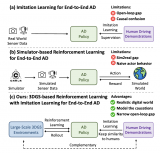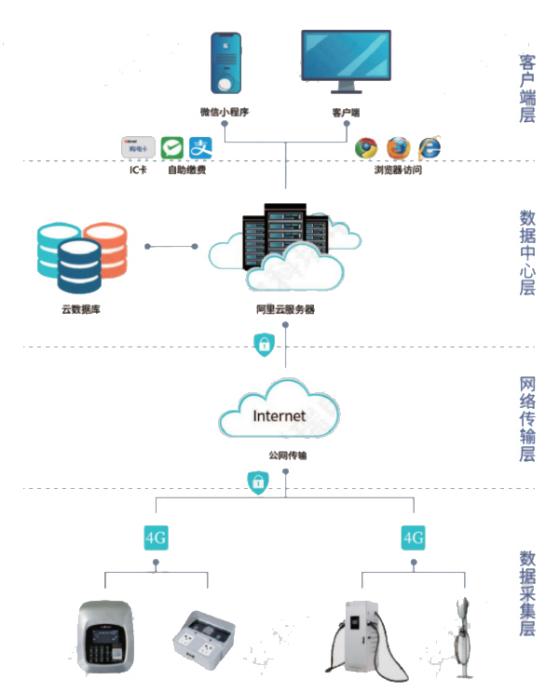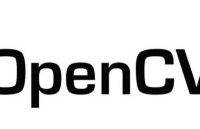目前流行的強化學(xué)習(xí)算法包括 Q-learning、SARSA、DDPG、A2C、PPO、DQN 和 TRPO。這些算法已被用于在游戲、機器人和決策制定等各種應(yīng)用中,并且這些流行的算法還在不斷發(fā)展和改進,本文我們將對其做一個簡單的介紹。

1、Q-learningQ-learning:Q-learning 是一種無模型、非策略的強化學(xué)習(xí)算法。它使用 Bellman 方程估計最佳動作值函數(shù),該方程迭代地更新給定狀態(tài)動作對的估計值。Q-learning 以其簡單性和處理大型連續(xù)狀態(tài)空間的能力而聞名。下面是一個使用 Python 實現(xiàn) Q-learning 的簡單示例:
import numpy as np
# Define the Q-table and the learning rate
Q = np.zeros((state_space_size, action_space_size))
alpha = 0.1
# Define the exploration rate and discount factor
epsilon = 0.1
gamma = 0.99
for episode in range(num_episodes):
current_state = initial_state
while not done:
# Choose an action using an epsilon-greedy policy
if np.random.uniform(0, 1) < epsilon:
action = np.random.randint(0, action_space_size)
else:
action = np.argmax(Q[current_state])
# Take the action and observe the next state and reward
reward, done = take_action(current_state, action)
# Update the Q-table using the Bellman equation
action] = Q[current_state, action] + alpha * (reward + gamma * np.max(Q[next_state]) - Q[current_state, action])
current_state = next_state
上面的示例中,state_space_size 和 action_space_size 分別是環(huán)境中的狀態(tài)數(shù)和動作數(shù)。num_episodes 是要為運行算法的輪次數(shù)。initial_state 是環(huán)境的起始狀態(tài)。take_action(current_state, action) 是一個函數(shù),它將當(dāng)前狀態(tài)和一個動作作為輸入,并返回下一個狀態(tài)、獎勵和一個指示輪次是否完成的布爾值。
在 while 循環(huán)中,使用 epsilon-greedy 策略根據(jù)當(dāng)前狀態(tài)選擇一個動作。使用概率 epsilon選擇一個隨機動作,使用概率 1-epsilon選擇對當(dāng)前狀態(tài)具有最高 Q 值的動作。采取行動后,觀察下一個狀態(tài)和獎勵,使用Bellman方程更新q。并將當(dāng)前狀態(tài)更新為下一個狀態(tài)。這只是 Q-learning 的一個簡單示例,并未考慮 Q-table 的初始化和要解決的問題的具體細節(jié)。2、SARSASARSA:SARSA 是一種無模型、基于策略的強化學(xué)習(xí)算法。它也使用Bellman方程來估計動作價值函數(shù),但它是基于下一個動作的期望值,而不是像 Q-learning 中的最優(yōu)動作。SARSA 以其處理隨機動力學(xué)問題的能力而聞名。
import numpy as np
# Define the Q-table and the learning rate
Q = np.zeros((state_space_size, action_space_size))
alpha = 0.1
# Define the exploration rate and discount factor
epsilon = 0.1
gamma = 0.99
for episode in range(num_episodes):
current_state = initial_state
action = epsilon_greedy_policy(epsilon, Q, current_state)
while not done:
# Take the action and observe the next state and reward
reward, done = take_action(current_state, action)
# Choose next action using epsilon-greedy policy
next_action = epsilon_greedy_policy(epsilon, Q, next_state)
# Update the Q-table using the Bellman equation
action] = Q[current_state, action] + alpha * (reward + gamma * Q[next_state, next_action] - Q[current_state, action])
current_state = next_state
action = next_action
state_space_size和action_space_size分別是環(huán)境中的狀態(tài)和操作的數(shù)量。num_episodes是您想要運行SARSA算法的輪次數(shù)。Initial_state是環(huán)境的初始狀態(tài)。take_action(current_state, action)是一個將當(dāng)前狀態(tài)和作為操作輸入的函數(shù),并返回下一個狀態(tài)、獎勵和一個指示情節(jié)是否完成的布爾值。
在while循環(huán)中,使用在單獨的函數(shù)epsilon_greedy_policy(epsilon, Q, current_state)中定義的epsilon-greedy策略來根據(jù)當(dāng)前狀態(tài)選擇操作。使用概率 epsilon選擇一個隨機動作,使用概率 1-epsilon對當(dāng)前狀態(tài)具有最高 Q 值的動作。上面與Q-learning相同,但是采取了一個行動后,在觀察下一個狀態(tài)和獎勵時它然后使用貪心策略選擇下一個行動。并使用Bellman方程更新q表。3、DDPGDDPG 是一種用于連續(xù)動作空間的無模型、非策略算法。它是一種actor-critic算法,其中actor網(wǎng)絡(luò)用于選擇動作,而critic網(wǎng)絡(luò)用于評估動作。DDPG 對于機器人控制和其他連續(xù)控制任務(wù)特別有用。
import numpy as np
from keras.models import Model, Sequential
from keras.layers import Dense, Input
from keras.optimizers import Adam
# Define the actor and critic models
actor = Sequential()
actor.add(Dense(32, input_dim=state_space_size, activation='relu'))
actor.add(Dense(32, activation='relu'))
actor.add(Dense(action_space_size, activation='tanh'))
actor.compile(loss='mse', optimizer=Adam(lr=0.001))
critic = Sequential()
critic.add(Dense(32, input_dim=state_space_size, activation='relu'))
critic.add(Dense(32, activation='relu'))
critic.add(Dense(1, activation='linear'))
critic.compile(loss='mse', optimizer=Adam(lr=0.001))
# Define the replay buffer
replay_buffer = []
# Define the exploration noise
exploration_noise = OrnsteinUhlenbeckProcess(size=action_space_size, theta=0.15, mu=0, sigma=0.2)
for episode in range(num_episodes):
current_state = initial_state
while not done:
# Select an action using the actor model and add exploration noise
action = actor.predict(current_state)[0] + exploration_noise.sample()
action = np.clip(action, -1, 1)
# Take the action and observe the next state and reward
next_state, reward, done = take_action(current_state, action)
# Add the experience to the replay buffer
replay_buffer.append((current_state, action, reward, next_state, done))
# Sample a batch of experiences from the replay buffer
batch = sample(replay_buffer, batch_size)
# Update the critic model
states = np.array([x[0] for x in batch])
actions = np.array([x[1] for x in batch])
rewards = np.array([x[2] for x in batch])
next_states = np.array([x[3] for x in batch])
target_q_values = rewards + gamma * critic.predict(next_states)
critic.train_on_batch(states, target_q_values)
# Update the actor model
action_gradients = np.array(critic.get_gradients(states, actions))
actor.train_on_batch(states, action_gradients)
current_state = next_state
在本例中,state_space_size和action_space_size分別是環(huán)境中的狀態(tài)和操作的數(shù)量。num_episodes是輪次數(shù)。Initial_state是環(huán)境的初始狀態(tài)。Take_action (current_state, action)是一個函數(shù),它接受當(dāng)前狀態(tài)和操作作為輸入,并返回下一個操作。4、A2CA2C(Advantage Actor-Critic)是一種有策略的actor-critic算法,它使用Advantage函數(shù)來更新策略。該算法實現(xiàn)簡單,可以處理離散和連續(xù)的動作空間。
import numpy as np
from keras.models import Model, Sequential
from keras.layers import Dense, Input
from keras.optimizers import Adam
from keras.utils import to_categorical
# Define the actor and critic models
state_input = Input(shape=(state_space_size,))
actor = Dense(32, activation='relu')(state_input)
actor = Dense(32, activation='relu')(actor)
actor = Dense(action_space_size, activation='softmax')(actor)
actor_model = Model(inputs=state_input, outputs=actor)
='categorical_crossentropy', optimizer=Adam(lr=0.001))
state_input = Input(shape=(state_space_size,))
critic = Dense(32, activation='relu')(state_input)
critic = Dense(32, activation='relu')(critic)
critic = Dense(1, activation='linear')(critic)
critic_model = Model(inputs=state_input, outputs=critic)
='mse', optimizer=Adam(lr=0.001))
for episode in range(num_episodes):
current_state = initial_state
done = False
while not done:
# Select an action using the actor model and add exploration noise
action_probs = actor_model.predict(np.array([current_state]))[0]
action = np.random.choice(range(action_space_size), p=action_probs)
# Take the action and observe the next state and reward
reward, done = take_action(current_state, action)
# Calculate the advantage
target_value = critic_model.predict(np.array([next_state]))[0][0]
advantage = reward + gamma * target_value - critic_model.predict(np.array([current_state]))[0][0]
# Update the actor model
action_one_hot = to_categorical(action, action_space_size)
advantage * action_one_hot)
# Update the critic model
reward + gamma * target_value)
current_state = next_state
在這個例子中,actor模型是一個神經(jīng)網(wǎng)絡(luò),它有2個隱藏層,每個隱藏層有32個神經(jīng)元,具有relu激活函數(shù),輸出層具有softmax激活函數(shù)。critic模型也是一個神經(jīng)網(wǎng)絡(luò),它有2個隱含層,每層32個神經(jīng)元,具有relu激活函數(shù),輸出層具有線性激活函數(shù)。使用分類交叉熵?fù)p失函數(shù)訓(xùn)練actor模型,使用均方誤差損失函數(shù)訓(xùn)練critic模型。動作是根據(jù)actor模型預(yù)測選擇的,并添加了用于探索的噪聲。5、PPOPPO(Proximal Policy Optimization)是一種策略算法,它使用信任域優(yōu)化的方法來更新策略。它在具有高維觀察和連續(xù)動作空間的環(huán)境中特別有用。PPO 以其穩(wěn)定性和高樣品效率而著稱。
import numpy as np
from keras.models import Model, Sequential
from keras.layers import Dense, Input
from keras.optimizers import Adam
# Define the policy model
state_input = Input(shape=(state_space_size,))
policy = Dense(32, activation='relu')(state_input)
policy = Dense(32, activation='relu')(policy)
policy = Dense(action_space_size, activation='softmax')(policy)
policy_model = Model(inputs=state_input, outputs=policy)
# Define the value model
value_model = Model(inputs=state_input, outputs=Dense(1, activation='linear')(policy))
# Define the optimizer
optimizer = Adam(lr=0.001)
for episode in range(num_episodes):
current_state = initial_state
while not done:
# Select an action using the policy model
action_probs = policy_model.predict(np.array([current_state]))[0]
action = np.random.choice(range(action_space_size), p=action_probs)
# Take the action and observe the next state and reward
reward, done = take_action(current_state, action)
# Calculate the advantage
target_value = value_model.predict(np.array([next_state]))[0][0]
advantage = reward + gamma * target_value - value_model.predict(np.array([current_state]))[0][0]
# Calculate the old and new policy probabilities
old_policy_prob = action_probs[action]
new_policy_prob = policy_model.predict(np.array([next_state]))[0][action]
# Calculate the ratio and the surrogate loss
ratio = new_policy_prob / old_policy_prob
surrogate_loss = np.minimum(ratio * advantage, np.clip(ratio, 1 - epsilon, 1 + epsilon) * advantage)
# Update the policy and value models
= value_model.trainable_weights
=optimizer, loss=-surrogate_loss)
np.array([action_one_hot]))
reward + gamma * target_value)
current_state = next_state
6、DQNDQN(深度 Q 網(wǎng)絡(luò))是一種無模型、非策略算法,它使用神經(jīng)網(wǎng)絡(luò)來逼近 Q 函數(shù)。DQN 特別適用于 Atari 游戲和其他類似問題,其中狀態(tài)空間是高維的,并使用神經(jīng)網(wǎng)絡(luò)近似 Q 函數(shù)。
import numpy as np
from keras.models import Sequential
from keras.layers import Dense, Input
from keras.optimizers import Adam
from collections import deque
# Define the Q-network model
model = Sequential()
model.add(Dense(32, input_dim=state_space_size, activation='relu'))
model.add(Dense(32, activation='relu'))
model.add(Dense(action_space_size, activation='linear'))
model.compile(loss='mse', optimizer=Adam(lr=0.001))
# Define the replay buffer
replay_buffer = deque(maxlen=replay_buffer_size)
for episode in range(num_episodes):
current_state = initial_state
while not done:
# Select an action using an epsilon-greedy policy
if np.random.rand() < epsilon:
action = np.random.randint(0, action_space_size)
else:
action = np.argmax(model.predict(np.array([current_state]))[0])
# Take the action and observe the next state and reward
next_state, reward, done = take_action(current_state, action)
# Add the experience to the replay buffer
replay_buffer.append((current_state, action, reward, next_state, done))
# Sample a batch of experiences from the replay buffer
batch = random.sample(replay_buffer, batch_size)
# Prepare the inputs and targets for the Q-network
inputs = np.array([x[0] for x in batch])
targets = model.predict(inputs)
for i, (state, action, reward, next_state, done) in enumerate(batch):
if done:
targets[i, action] = reward
else:
targets[i, action] = reward + gamma * np.max(model.predict(np.array([next_state]))[0])
# Update the Q-network
model.train_on_batch(inputs, targets)
current_state = next_state
上面的代碼,Q-network有2個隱藏層,每個隱藏層有32個神經(jīng)元,使用relu激活函數(shù)。該網(wǎng)絡(luò)使用均方誤差損失函數(shù)和Adam優(yōu)化器進行訓(xùn)練。7、TRPOTRPO (Trust Region Policy Optimization)是一種無模型的策略算法,它使用信任域優(yōu)化方法來更新策略。它在具有高維觀察和連續(xù)動作空間的環(huán)境中特別有用。TRPO 是一個復(fù)雜的算法,需要多個步驟和組件來實現(xiàn)。TRPO不是用幾行代碼就能實現(xiàn)的簡單算法。所以我們這里使用實現(xiàn)了TRPO的現(xiàn)有庫,例如OpenAI Baselines,它提供了包括TRPO在內(nèi)的各種預(yù)先實現(xiàn)的強化學(xué)習(xí)算法,。要在OpenAI Baselines中使用TRPO,我們需要安裝:
pip install baselines
然后可以使用baselines庫中的trpo_mpi模塊在你的環(huán)境中訓(xùn)練TRPO代理,這里有一個簡單的例子:
import gym
from baselines.common.vec_env.dummy_vec_env import DummyVecEnv
from baselines.trpo_mpi import trpo_mpi
#Initialize the environment
env = gym.make("CartPole-v1")
env = DummyVecEnv([lambda: env])
# Define the policy network
policy_fn = mlp_policy
#Train the TRPO model
model = trpo_mpi.learn(env, policy_fn, max_iters=1000)
我們使用Gym庫初始化環(huán)境。然后定義策略網(wǎng)絡(luò),并調(diào)用TRPO模塊中的learn()函數(shù)來訓(xùn)練模型。還有許多其他庫也提供了TRPO的實現(xiàn),例如TensorFlow、PyTorch和RLLib。下面時一個使用TF 2.0實現(xiàn)的樣例:
import tensorflow as tf
import gym
# Define the policy network
class PolicyNetwork(tf.keras.Model):
def __init__(self):
super(PolicyNetwork, self).__init__()
self.dense1 = tf.keras.layers.Dense(16, activation='relu')
self.dense2 = tf.keras.layers.Dense(16, activation='relu')
self.dense3 = tf.keras.layers.Dense(1, activation='sigmoid')
def call(self, inputs):
x = self.dense1(inputs)
x = self.dense2(x)
x = self.dense3(x)
return x
# Initialize the environment
env = gym.make("CartPole-v1")
# Initialize the policy network
policy_network = PolicyNetwork()
# Define the optimizer
optimizer = tf.optimizers.Adam()
# Define the loss function
loss_fn = tf.losses.BinaryCrossentropy()
# Set the maximum number of iterations
max_iters = 1000
# Start the training loop
for i in range(max_iters):
# Sample an action from the policy network
action = tf.squeeze(tf.random.categorical(policy_network(observation), 1))
# Take a step in the environment
observation, reward, done, _ = env.step(action)
with tf.GradientTape() as tape:
# Compute the loss
loss = loss_fn(reward, policy_network(observation))
# Compute the gradients
grads = tape.gradient(loss, policy_network.trainable_variables)
# Perform the update step
optimizer.apply_gradients(zip(grads, policy_network.trainable_variables))
if done:
# Reset the environment
observation = env.reset()
在這個例子中,我們首先使用TensorFlow的Keras API定義一個策略網(wǎng)絡(luò)。然后使用Gym庫和策略網(wǎng)絡(luò)初始化環(huán)境。然后定義用于訓(xùn)練策略網(wǎng)絡(luò)的優(yōu)化器和損失函數(shù)。在訓(xùn)練循環(huán)中,從策略網(wǎng)絡(luò)中采樣一個動作,在環(huán)境中前進一步,然后使用TensorFlow的GradientTape計算損失和梯度。然后我們使用優(yōu)化器執(zhí)行更新步驟。這是一個簡單的例子,只展示了如何在TensorFlow 2.0中實現(xiàn)TRPO。TRPO是一個非常復(fù)雜的算法,這個例子沒有涵蓋所有的細節(jié),但它是試驗TRPO的一個很好的起點。總結(jié)
以上就是我們總結(jié)的7個常用的強化學(xué)習(xí)算法,這些算法并不相互排斥,通常與其他技術(shù)(如值函數(shù)逼近、基于模型的方法和集成方法)結(jié)合使用,可以獲得更好的結(jié)果。
END
歡迎加入Imagination GPU與人工智能交流2群 入群請加小編微信:eetrend89
入群請加小編微信:eetrend89(添加請備注公司名和職稱)
推薦閱讀 對話Imagination中國區(qū)董事長:以GPU為支點加強軟硬件協(xié)同,助力數(shù)字化轉(zhuǎn)型手機芯片這個功能,有望改變市場格局!
Imagination Technologies是一家總部位于英國的公司,致力于研發(fā)芯片和軟件知識產(chǎn)權(quán)(IP),基于Imagination IP的產(chǎn)品已在全球數(shù)十億人的電話、汽車、家庭和工作 場所中使用。獲取更多物聯(lián)網(wǎng)、智能穿戴、通信、汽車電子、圖形圖像開發(fā)等前沿技術(shù)信息,歡迎關(guān)注 Imagination Tech!
原文標(biāo)題:7個流行的強化學(xué)習(xí)算法及代碼實現(xiàn)
文章出處:【微信公眾號:Imagination Tech】歡迎添加關(guān)注!文章轉(zhuǎn)載請注明出處。
-
imagination
+關(guān)注
關(guān)注
1文章
597瀏覽量
61988
原文標(biāo)題:7個流行的強化學(xué)習(xí)算法及代碼實現(xiàn)
文章出處:【微信號:Imgtec,微信公眾號:Imagination Tech】歡迎添加關(guān)注!文章轉(zhuǎn)載請注明出處。
發(fā)布評論請先 登錄
18個常用的強化學(xué)習(xí)算法整理:從基礎(chǔ)方法到高級模型的理論技術(shù)與代碼實現(xiàn)

基于RV1126開發(fā)板實現(xiàn)自學(xué)習(xí)圖像分類方案

詳解RAD端到端強化學(xué)習(xí)后訓(xùn)練范式

淺談適用規(guī)模充電站的深度學(xué)習(xí)有序充電策略

一個月速成python+OpenCV圖像處理

螞蟻集團收購邊塞科技,吳翼出任強化學(xué)習(xí)實驗室首席科學(xué)家
NPU與機器學(xué)習(xí)算法的關(guān)系
如何使用 PyTorch 進行強化學(xué)習(xí)
Pure path studio內(nèi)能否自己創(chuàng)建一個component,來實現(xiàn)特定的算法,例如LMS算法?
谷歌AlphaChip強化學(xué)習(xí)工具發(fā)布,聯(lián)發(fā)科天璣芯片率先采用
深度學(xué)習(xí)算法在嵌入式平臺上的部署
利用Matlab函數(shù)實現(xiàn)深度學(xué)習(xí)算法
深度學(xué)習(xí)的基本原理與核心算法
機器學(xué)習(xí)算法原理詳解
通過強化學(xué)習(xí)策略進行特征選擇






 7個流行的強化學(xué)習(xí)算法及代碼實現(xiàn)
7個流行的強化學(xué)習(xí)算法及代碼實現(xiàn)










評論